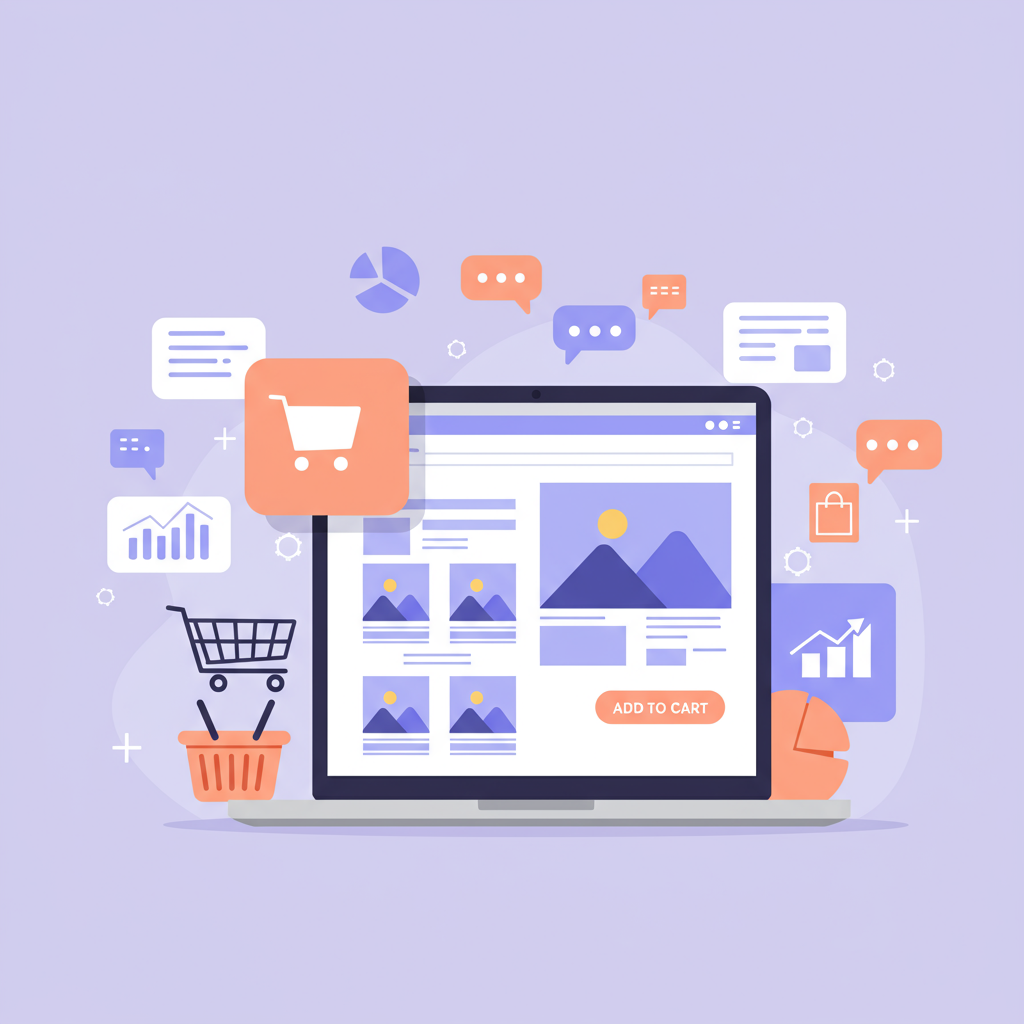Unlocking User Behavior to Design a Store That Converts
Hello fellow merchants! Today, I want to talk about something truly powerful that can transform your Shopify store from just another online shop into a conversion powerhouse: the psychology of e-commerce design.
It’s not just about pretty pictures and catchy product descriptions. It’s about understanding how your customers think, feel, and make decisions when they visit your site.
By applying psychological principles, we can create an online environment that guides visitors effortlessly towards a purchase, builds trust, and fosters loyalty.
My goal is to walk you through these principles, showing you how to implement them practically on your Shopify store to create a truly user-friendly and highly effective shopping experience.
Let’s start with the foundation: Trust and Credibility. In the online world, where physical interaction is absent, trust is paramount.
Customers need to feel secure and confident that you are a legitimate business and that their personal and financial information is safe.
Displaying security badges, like SSL certificates or trusted payment gateway logos, prominently on your site can significantly alleviate these concerns.
Clear contact information, an “About Us” page with your story, and transparent return policies also build immense credibility. Don’t hide these details; make them easy to find.
Next, let’s consider Visual Hierarchy and Aesthetics. The human brain processes visuals incredibly fast. Your store’s design should guide the eye naturally.
Use white space effectively to reduce clutter and make key elements stand out. A clean, uncluttered layout feels professional and is easier to navigate.
High-quality product images from multiple angles are non-negotiable. They allow customers to visualize the product as if they were holding it in their hands.
Consistent branding – colors, fonts, and tone – across your entire store reinforces your identity and makes your brand memorable.
Now, let’s talk about Navigation and User Flow. An intuitive navigation system is crucial for a positive user experience.
Customers should never feel lost or confused about where to go next. Clear menus, logical categories, and a functional search bar are essential.
Think about the customer’s journey from landing page to checkout. Is it smooth? Are there any unnecessary steps or confusing redirects?
Minimizing the number of clicks required to complete a purchase can dramatically improve conversion rates. Every extra click is an opportunity for a customer to abandon their cart.
Scarcity and Urgency are powerful motivators. Phrases like “Limited Stock!” or “Offer Ends Soon!” can create a fear of missing out (FOMO).
This psychological trigger encourages immediate action. However, use it authentically; false scarcity can damage your credibility.
Social Proof is another cornerstone of e-commerce psychology. People are inherently influenced by the actions and opinions of others.
Customer reviews and testimonials are incredibly powerful. Encourage your customers to leave reviews and display them prominently on product pages.
User-generated content, like photos of customers using your products, adds an authentic layer of social proof that traditional marketing can’t replicate.
Consider displaying “X people recently bought this” or “X people are viewing this product right now” notifications, if appropriate for your brand.
Personalization is no longer a luxury; it’s an expectation. Tailoring the shopping experience to individual preferences can significantly boost engagement.
This could involve personalized product recommendations based on browsing history or past purchases, or even dynamic content based on location.
Clear and Compelling Call to Actions (CTAs) are vital. Buttons like “Add to Cart,” “Buy Now,” or “Shop Collection” need to be prominent, action-oriented, and easy to spot.
Use contrasting colors for your CTAs to make them pop, and ensure the text is concise and persuasive.
Minimizing Friction in the checkout process is paramount. A complicated or lengthy checkout is a major reason for cart abandonment.
Offer guest checkout options, clearly display shipping costs upfront, and provide multiple payment methods to cater to diverse preferences.
Don’t forget Mobile Optimization. A significant portion of online shopping now happens on mobile devices. Your Shopify store must be fully responsive and provide a seamless experience on any screen size.
Finally, remember that e-commerce design is an ongoing process. Utilize A/B testing to experiment with different layouts, CTAs, and messaging.
Data-driven decisions will always lead to better results. Continuously analyze your analytics to understand user behavior and identify areas for improvement.
Ultimately, we’re not just selling products; we’re selling experiences and solutions. Connect with your customers on an emotional level through your brand story and product benefits.
What do you think about these psychological principles? Have you implemented any of them in your own Shopify store, and what results have you seen?
By thoughtfully applying these psychological principles to your Shopify store’s design, you’re not just building a website; you’re crafting an intuitive, trustworthy, and highly persuasive sales machine.
It’s about making the customer’s journey enjoyable, effortless, and ultimately, successful for both them and your business.






